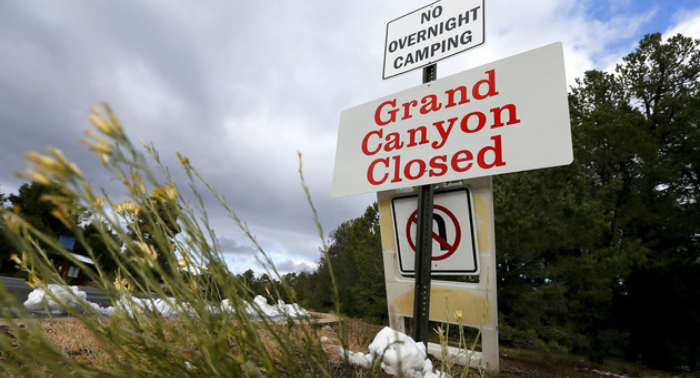Pending a budget agreement in Congress this weekend, entrances to many national parks might be inaccessible, and numerous park rangers are facing furloughs, as announced by the Department of Interior.
This decision is a notable shift from half a decade ago, where under the Trump administration, certain prominent parks were kept operational. This move was later criticized as unlawful by the Government Accountability Office.
If no agreement is reached, a significant portion of the 420-plus national park sites will be closed to visitors, state Interior representatives. Nevertheless, state leaders from Arizona and Utah have expressed intentions to utilize state resources to ensure that landmarks such as the Grand Canyon and Zion remain open to the public.
Access to other parks will be contingent upon various factors, including their size and location. As a general rule, if a site is typically closed after regular hours, it will likely stay shut. While places like the National Mall might remain accessible, services such as restrooms or trash collection may not be assured.
The Interior Department urged the public to refrain from visiting during any potential funding interruptions, emphasizing the importance of preserving the environment and ensuring visitor safety.
The National Park Service director has the authority to forge partnerships with local, state, tribal governments, or third parties to solicit donations for park activities. These provisional plans in case of a shutdown were anticipated to be available online by the end of the week.
However, the nonprofit National Parks Conservation Association has warned about the risks of keeping parks open during such periods without adequate personnel and resources. Past instances, such as overflowing trash at Joshua Tree National Park during a 35-day shutdown, stand testament to these concerns.
Sen. John Barrasso, a Republican from Wyoming, has made an appeal to the Interior Secretary, Deb Haaland, to consider utilizing previously accumulated fees to keep the parks running. This strategy was previously adopted in 2018 and 2019 by the Trump administration, a move later deemed in violation of appropriations laws.
Both Arizona’s Democratic Governor, Katie Hobbs, and Utah’s Republican Governor, Spencer Cox, intend to employ state resources to guarantee that visitors can access major attractions. They highlight the crucial economic role these sites play for local communities and their states.
A potential shutdown might result in national parks missing out on nearly a million daily visitors. This could translate into an economic loss of up to $70 million for local communities, as estimated by the conservation association.
During the previous shutdown, Arizona utilized Lottery funds to maintain basic operations at the Grand Canyon, while Utah had employed funds to ensure parks like Zion, Bryce Canyon, and Arches remained functional. This year, Colorado and South Dakota are also evaluating their strategies in case of a shutdown.
However, not all states have shown willingness to bear the cost. Governors from Washington and California have indicated no plans to allocate additional funds to keep their national parks open during a potential shutdown.




